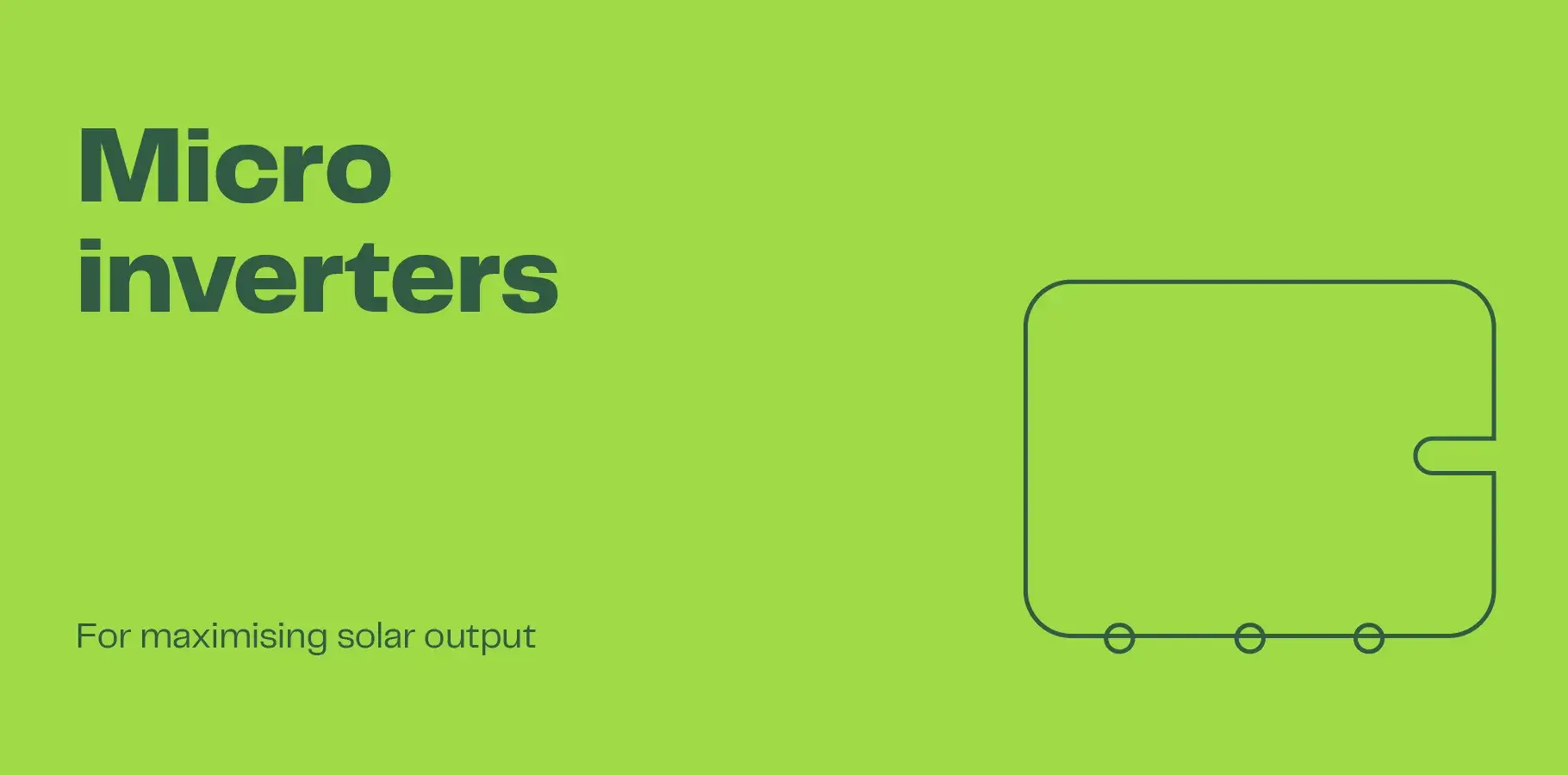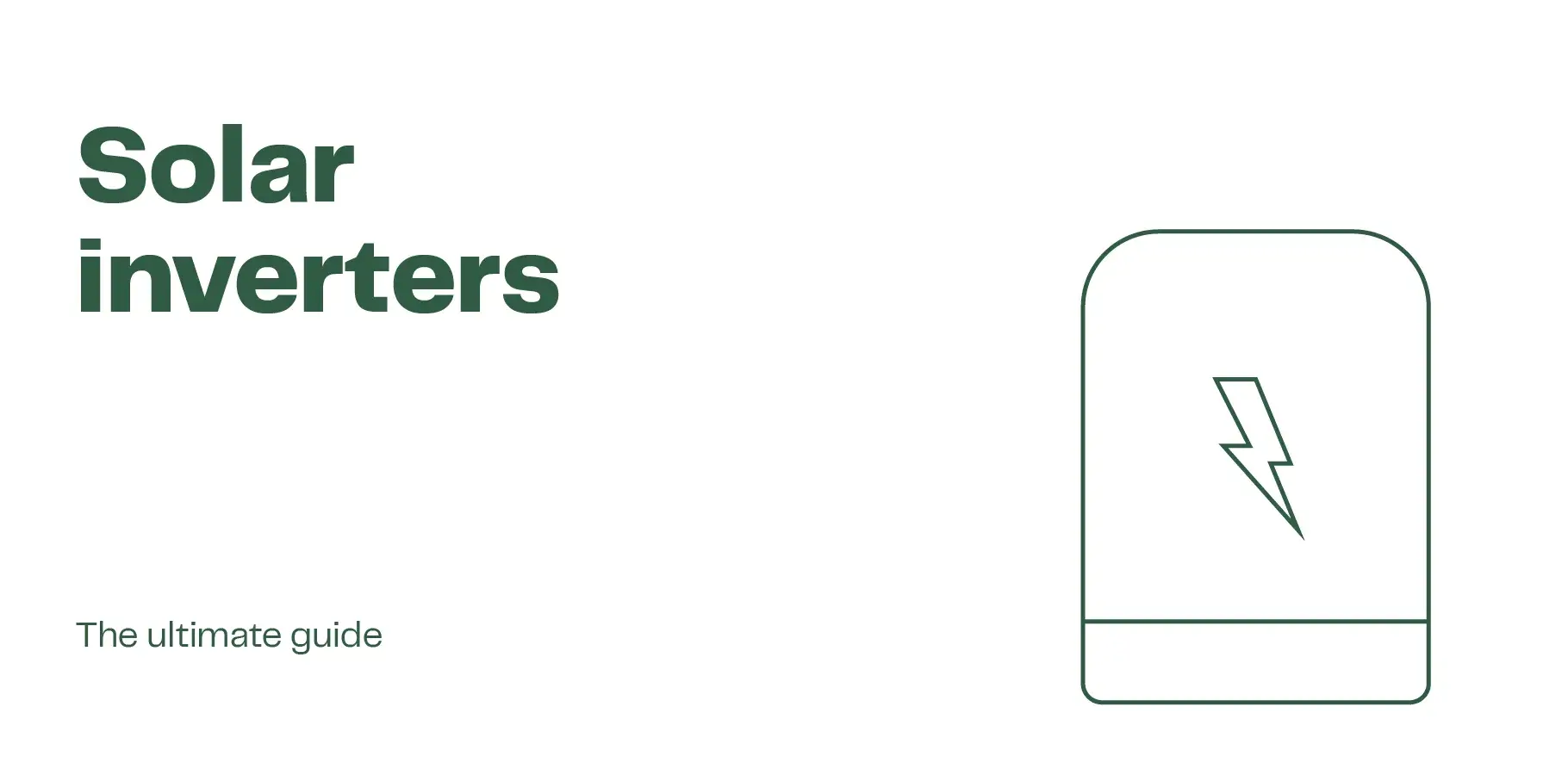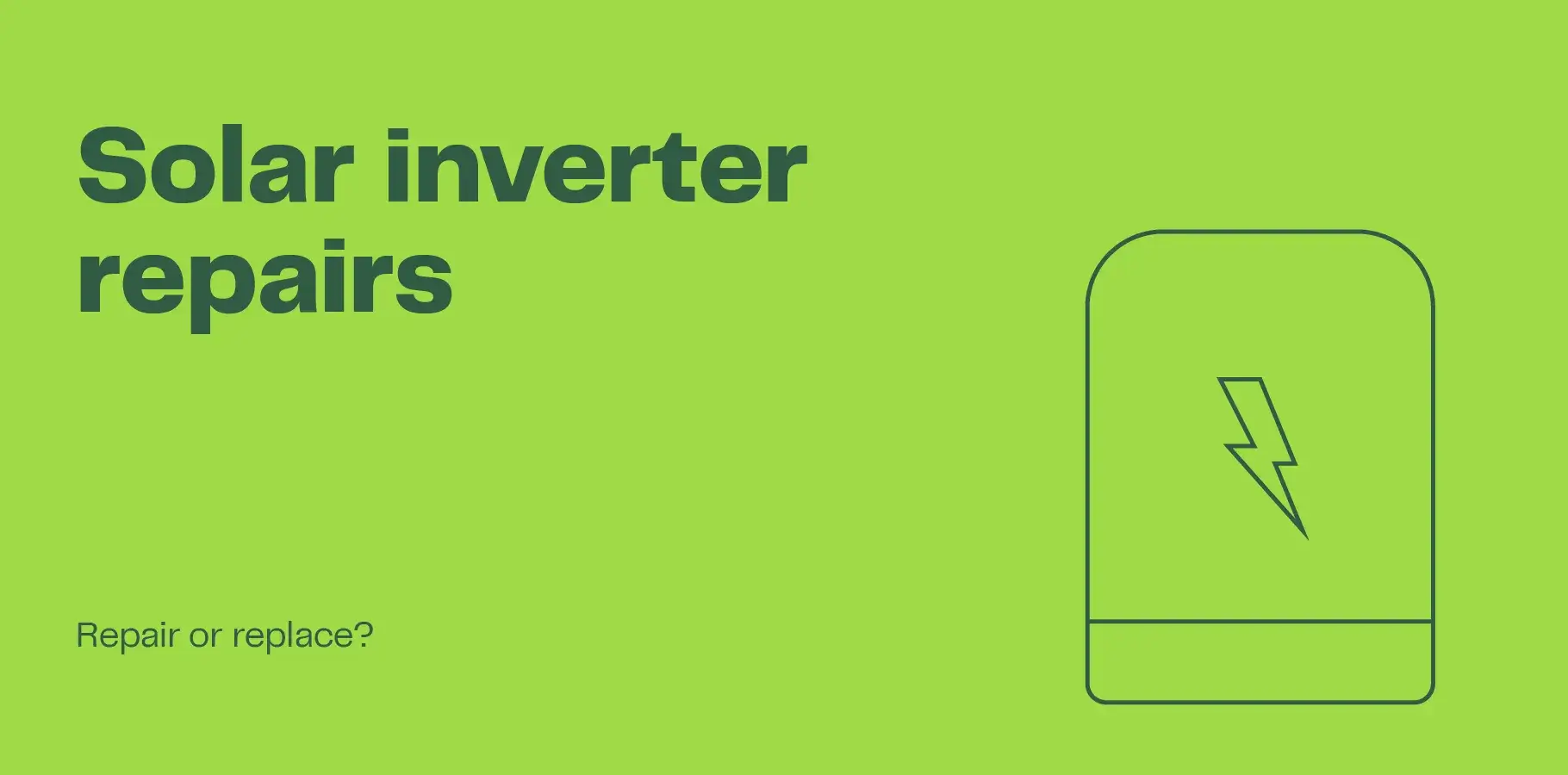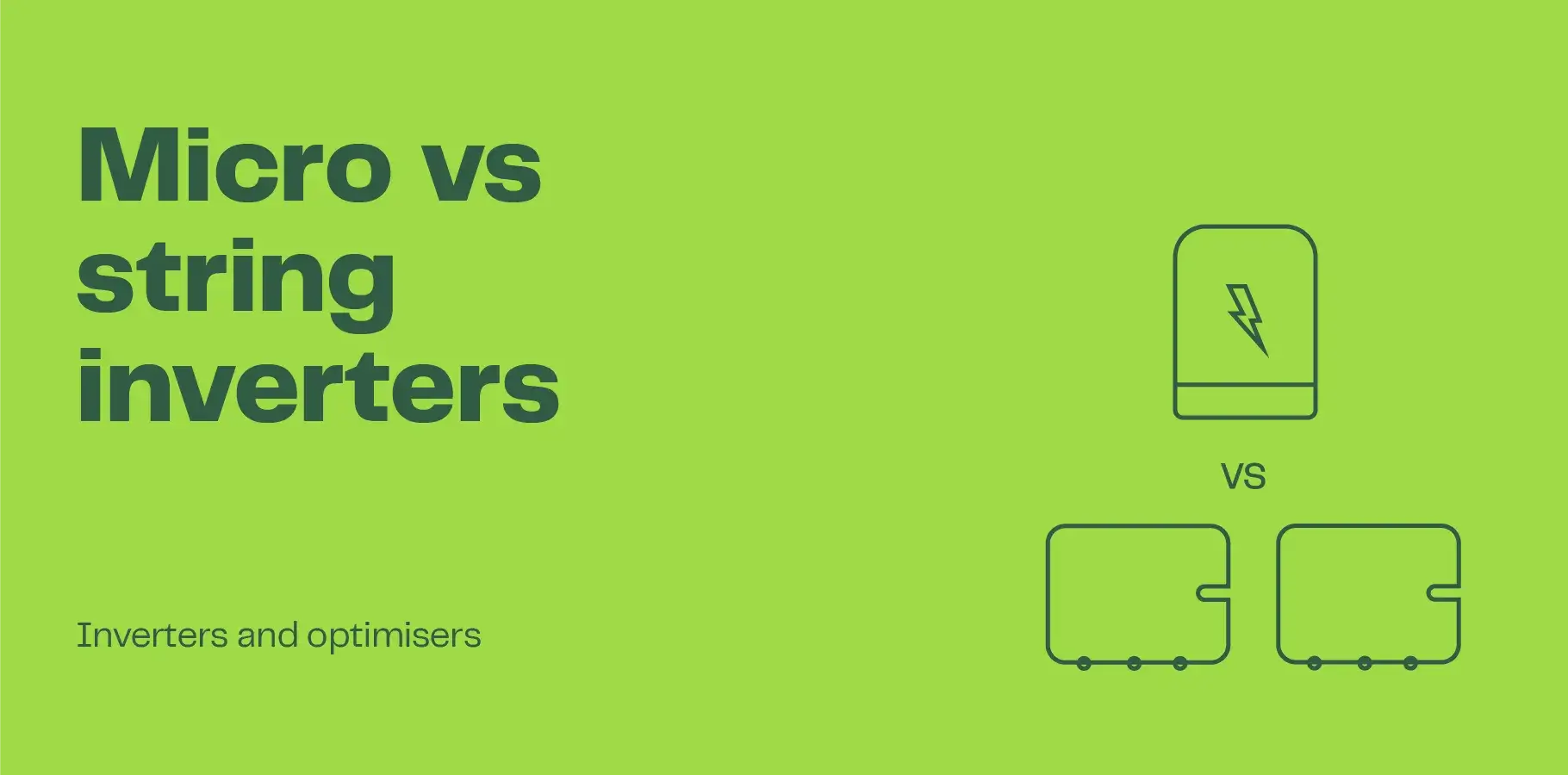A micro inverter is a small solar inverter that is fitted to each solar panel, they allow the modules to operate independently of each other. If solar output is compromised by shading or soiling on one panel, only that singular module is affected and not the entire solar system. Micro inverters convert direct current (DC) to alternate current (AC) at the panel, and are often referred to as AC solar panels.
In contrast, string inverters are often positioned on an exterior wall and operate in a series, the output from the panels is only as strong as the worst performing panel. We compare a micro inverter vs a string inverter in this blog post.
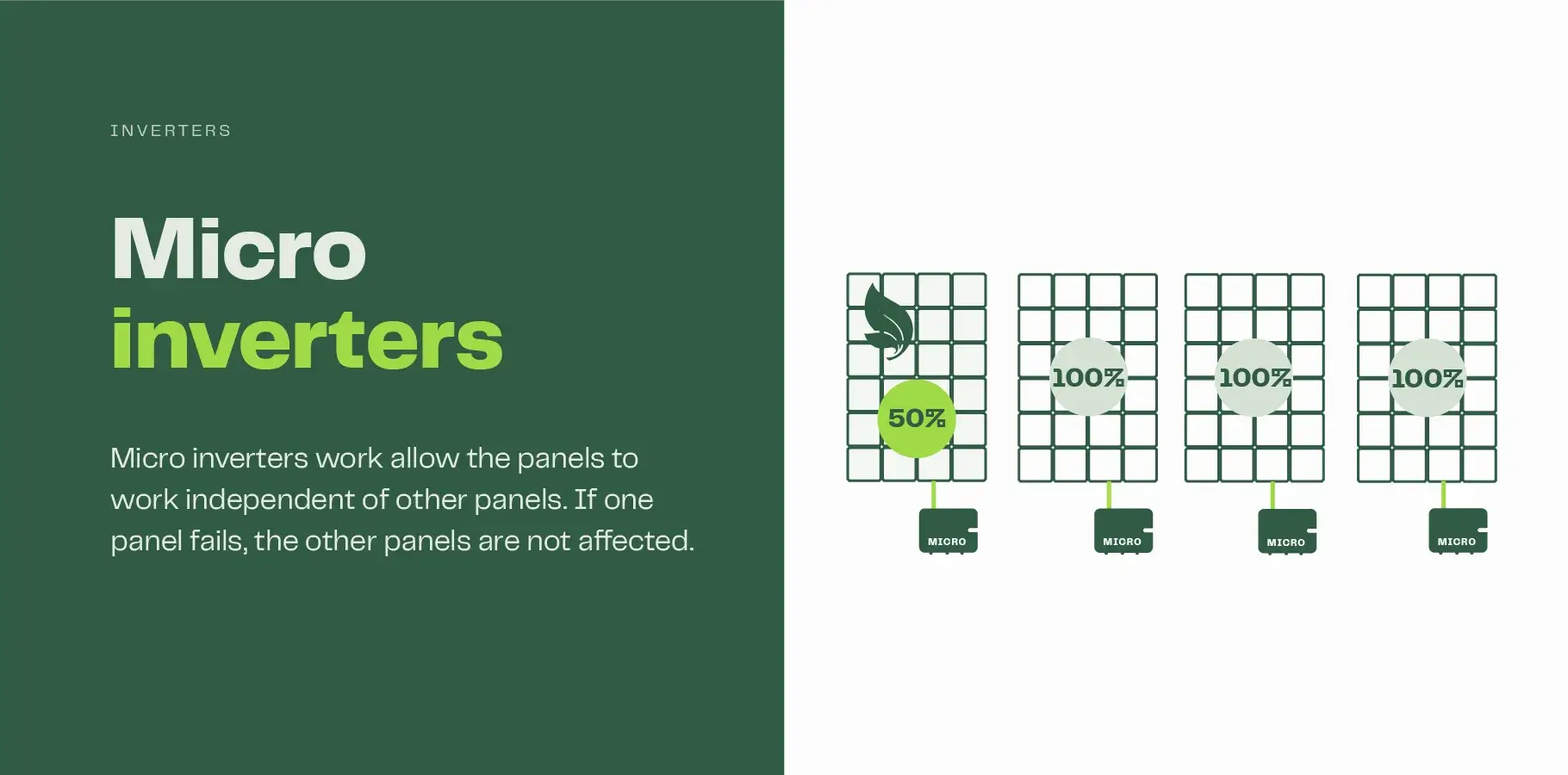
Micro inverter brands
There are many micro inverter brands but really only one that we would recommend and that is Enphase. Enphase manufacture top-quality micro inverters, and these are considered among the very best solar inverters.
Advantages of micro inverters
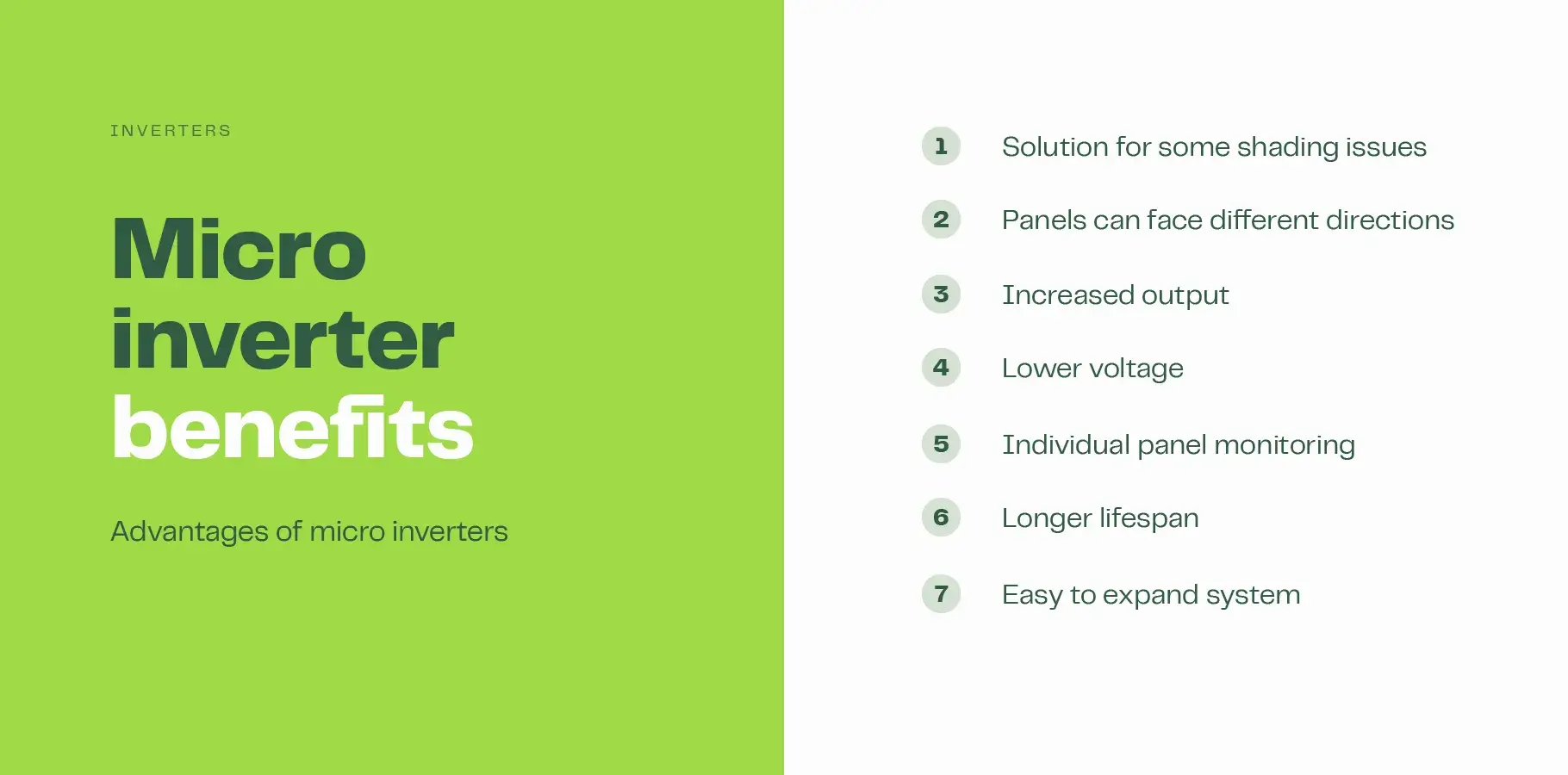
There are several advantages that micro inverters can add to a solar power system, these include:
- A solution to shading issues
- Allow for panels on different orientations
- Increased output
- Greater safety due to lower voltage
- Individual panel monitoring
- Longer lifespan
- Easy to expand the system size
Micro inverters are an effective shading solution
If your solar panels are subjected to shading during the day, the output of the system will drop in line with the worst performing panel. If just one panel is affected, it brings down the output of the entire system. Both micro inverters and DC optimisers are a great solution to solar shading issues because they allow the panels to operate independently from one another, if only one panel is subject to shading, then the remainder of the system can perform as normal.
Panels on different roof orientations
If you are not able to position your panels to the north, you have to decide between east and west, but ideally you may consider panels on both orientations. Micro inverters allow you to install solar panels on different facing rooftops eg. East and west, and generate electricity during the peak morning and afternoon periods.
Increased output
Shading from trees is not the only impediment to solar output, there are many other factors the can reduce solar output, including:
- Soil and debris
- Power tolerance
- Degradation
- Module temperature
Any of these factors can reduce the performance of a solar panel. Micro inverters limit the panel output losses to the affected module, and not the entire system.
Lower voltage = greater safety
A solar panel system with micro inverters operates at a much lower voltage. Typical solar inverters operate at a high voltage of 600V DC whereas micro inverters run at 240V AC. The higher the voltage, the greater the risk of fire and damage to individual cells or modules.
Individual panel monitoring
Micro inverters allow you to monitor the performance of each individual panel, as opposed to the entire system. Individual panel monitoring makes it easier to identity defects or underperforming modules.
Micro inverters last longer
Micro inverters can last up to 20 years, whereas typically a good string inverter only lasts 10 years. Not only does this increase the value of micro inverters, but it brings them more in line with the lifespan of the solar panels.
Easy to expand a micro inverter solar panel system
It’s far easier to expand a micro inverter solar panel system because you do not need to change the inverter, rather you can just add new panels with an attached micro inverter as you wish.
Disadvantages of micro inverters
Despite all of the upsides that micro inverters deliver, there are a few disadvantages you may consider, these include :
- Micro inverters cost more
- Greater exposure to the elements
- Not compatible with many batteries
Micro inverter solar system price
Micro inverters can add as much as 20% to the total cost of a solar power system when compared to a top quality string inverter. It’s worth bearing in mind that a 20% price difference between components is not unusual, the best solar panels can vary in price significantly too, it all comes down to paying more for quality products.
Micro inverters are exposed to the elements
Micro inverters are fitted to each panel, and therefore they receive the full brunt of the weather: heat, rain hail and sunshine. Compare this to string inverters that are usually positioned on a vertical wall out of the elements and harms way.
Solar battery compatibility
When it comes to adding a battery to a micro inverter solar system you have far less choice. Micro inverters are typically only compatible with AC coupled battery systems. However, there are some good AC battery options including: Telsa Powerwall II, Sonnen and the smaller Enphase batteries.
Are micro inverters worth it?
Micro inverters are not needed, nor worthwhile in every instance. For many, the added cost is enough to rule them out as an option. However, there are instances where they add value. Micro inverters are typically worth it, if:
- Your rooftop is subject to shading
- You require a multi-orientation panel install
- You live in a townhouse or unit
- You want high-end quality and maximum performance
Micro inverter FAQs
How long do micro inverters last?
Micro inverters come with a 10-year warranty but are reported to last up to 20 years.
What are AC solar panels?
AC solar panels have an inverter fitted to each module that converts the DC to AC at the source. AC solar panels do not require a central inverter and operate at a lower voltage.
